Can a dog fit in a one person tent? Absolutely, with the right considerations. This guide will provide you with insight into matching your tent to your dog’s size and preparing for a cozy night under the stars together. From evaluating tent dimensions to packing effectively, learn how to plan a successful camping experience with your four-legged friend.
Key Takeaways
- The size of your dog is key when picking out a tent; they should comfortably fit with enough room to stretch, plus space for your gear.
- When choosing a tent, look for durable materials like nylon or canvas to withstand doggy behavior, and features like easy access, good airflow, and weather resistance for you and your pup’s comfort.
- Pack smart for your dog’s camping needs with essentials like a dog sleeping pad and tent footprint, balancing the trade-off between comfort and the weight of your gear.
Sizing Up the Space: Can Your Dog Snuggle in a Solo Tent?
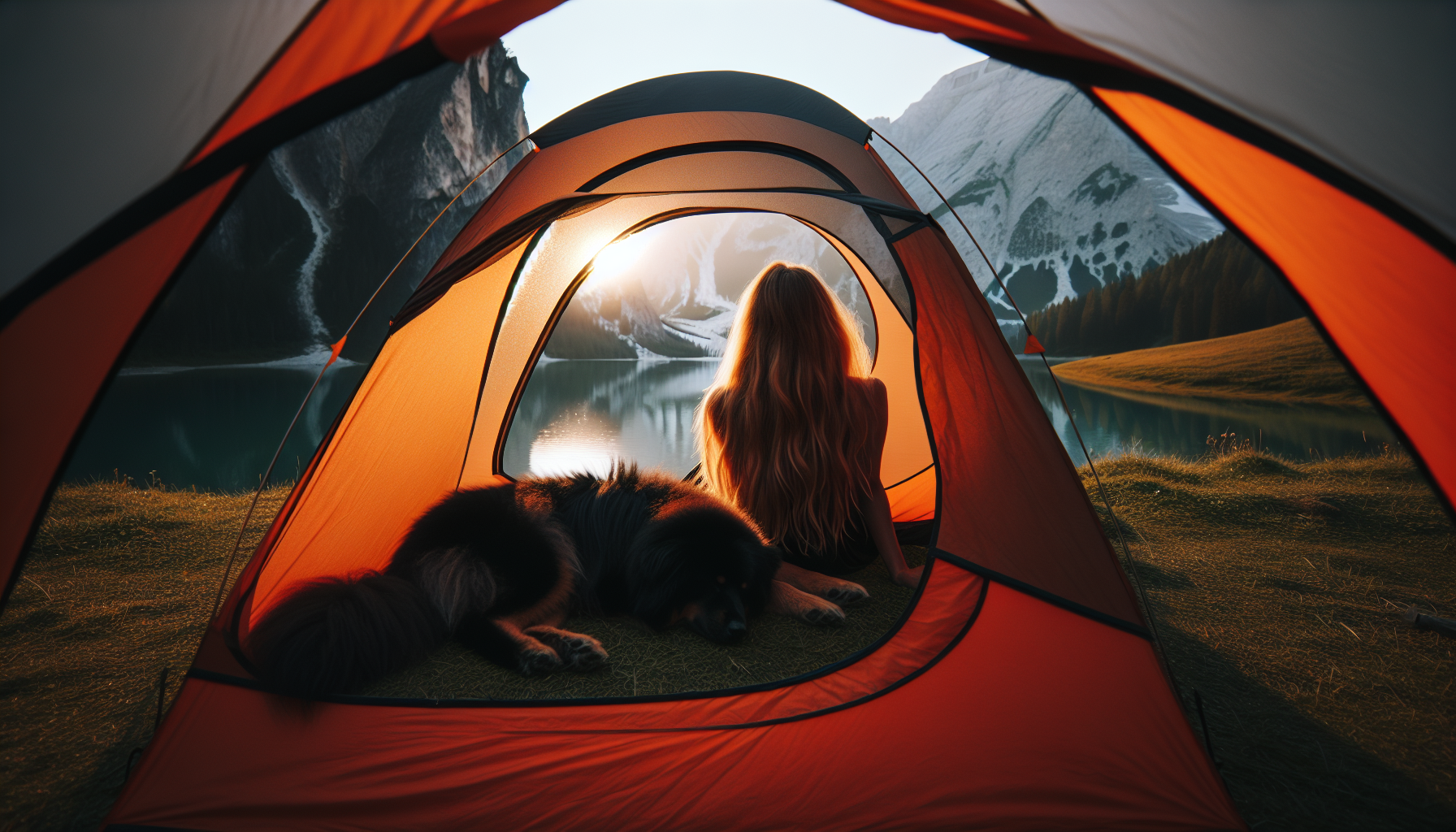
Size is a crucial factor when choosing a tent for your camping trip. The average dimensions of a one-person backpacking tent are generally around 7.5 x 4 feet. That’s about the size of a single bed. Now, imagine sharing that space with your dog. You might be thinking, “How much room does a dog really need?” Well, your furry friend should have enough space to stretch, sit, or lay down comfortably, along with room for your sleeping bag.
The size of your dog significantly influences the tent selection. Small dogs usually weigh less than 24 pounds and stand under 16 inches tall, making them suitable for car camping with a solo tent. Medium dogs, weighing between 25 and 59 pounds and standing 16 to 24 inches tall, might require more space. To figure out the exact room your dog would need, measure them from the tip of the nose to the base of the tail, add 6 inches to that number, and divide the result by 144 to get the required floor space in square feet.
Tailoring Your Tent Choice: Selecting the Right Solo Tent for You and Your Pooch
Having considered the dimensions, we can now focus on the selection of the tent itself. The Coleman Skydome, for instance, is a two-person tent that can be set up using trekking poles, providing enough room for you and your dog. However, the type of material the tent is made of can significantly influence the comfort and durability of your camping experience. A lightweight two-person tent made of sturdy materials like nylon or canvas can keep your furry friend safe from dirt and other elements while withstanding the force of their nails.
While choosing a solo tent for your camping adventure, consider features that enhance convenience when camping with your dog. Some features to consider are:
- Fewer cords to trip over
- Easy access for both of you
- Lots of pockets for storing items
- A freestanding design
- Mesh windows for good airflow
- The ability to withstand different weather conditions
These aspects will make your camping experience with your dog more enjoyable and convenient.
Remember, the tent is not just for you; it’s a shared space between you and your four-legged best friend.
The Comfort Compromise: Making Room for Man's Best Friend
Co-habiting a small space with a dog requires a genuine compromise on comfort. It’s about making the most of the space you have and ensuring that both you and your dog are comfortable. Here are some tips to create a cozy living space for your dog:
- Give them their own bed or blanket, and place a tarp underneath for protection.
- Bring along their favorite toys to help them feel more at home.
- Position tent zippers out of the dog’s reach to prevent any escape attempts or damages.
Still, your dog’s size and the amount of gear you have can dictate the required space. Some campers manage with a medium to large dog in a two-person tent, but others might require a bigger tent for their dog, gear, and other family members. It’s about striking a balance between ensuring enough room for your dog to move around and maintaining your own comfort.
Assessing Tent Features for Pup Compatibility

In selecting a tent for camping with your dog, evaluating specific features for dog compatibility is vital. Two main features to consider are durability against doggy damage and ease of cleaning for muddy paws and other messes.
Let’s delve deeper into these features.
Durability Against Doggy Damage
An exuberant dog can pose a significant challenge to a tent. Their claws and chewing can potentially damage the tent material. Therefore, it’s crucial to opt for tents made with sturdy materials, such as nylon or canvas, which are known to resist dog scratches better than other materials. Although nylon is tougher and stretchier, and thus good at handling dog claws, it can break down in the sun and absorb moisture, making it less resilient than polyester in some aspects.
To prevent any potential damages, it’s advisable to trim your dog’s nails and use a ground cloth to protect the tent floor. Ensuring the tent has a WeatherTec floor for extra toughness against dog nails is also a good idea. This way, you can ensure your tent handles your dog’s roughhousing and lasts for many camping trips to come.
Cleaning Ease for Muddy Paws and More
Following an extensive day of wilderness exploration, your dog is likely to become somewhat messy. Muddy paw prints and dirt are a common sight in a dog-friendly tent. But worry not, with the right tent, clean-up can be a breeze. Tents with removable or easy-to-clean floors are a godsend for dog-owners. You can simply rinse your tent with warm/cool water and use a wet cloth to scrub away the muddy paw prints.
Further, to prevent your dog’s nails from damaging the tent floor, consider keeping their nails short and putting down a protective layer like a tarp, ground cloth, or foam. Not only does this save your tent floor, but it also makes cleaning up after your camping trip much easier.
Packing Smart: Gear to Bring When Camping with Your Canine
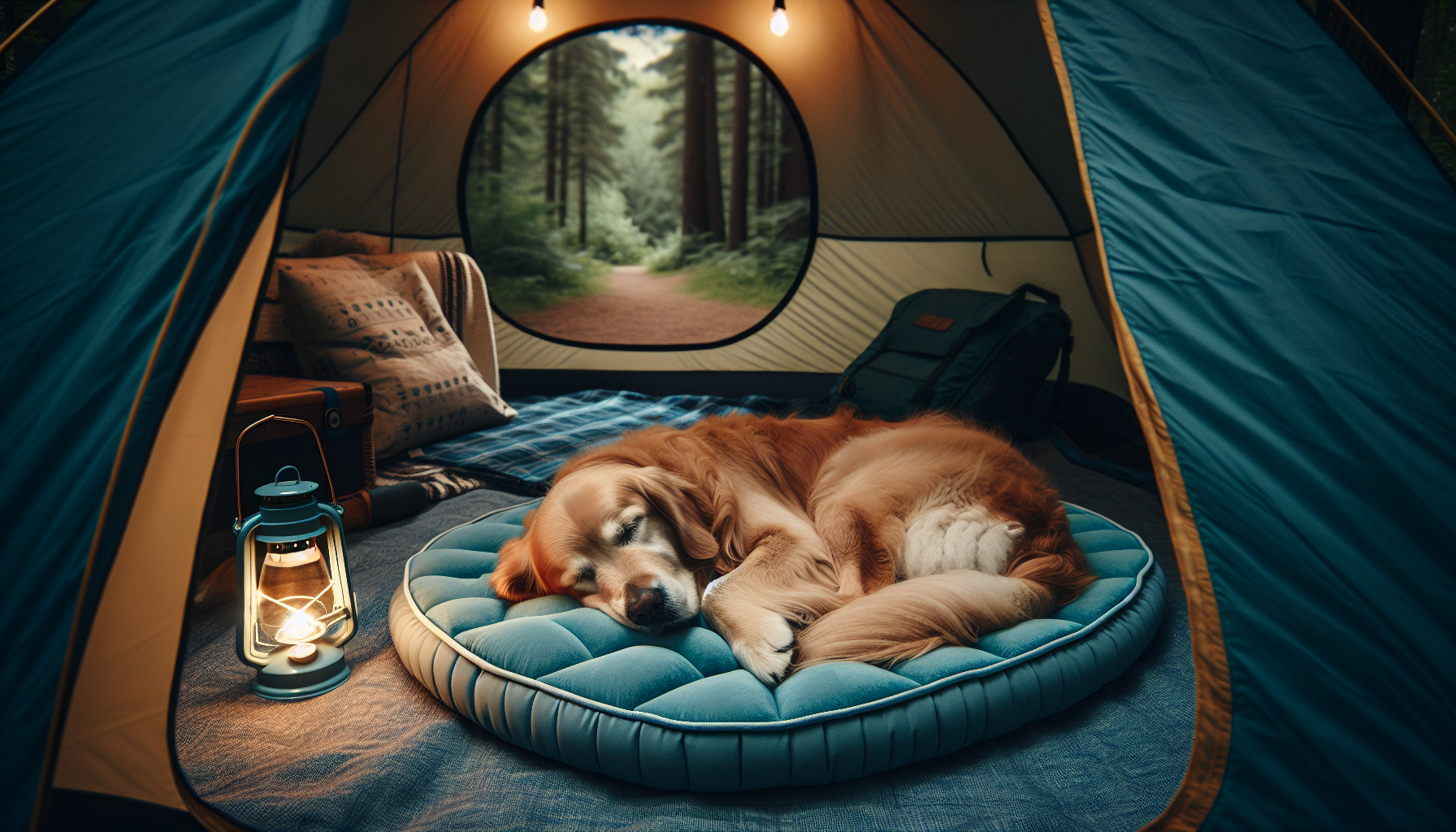
Effectively organizing a camping journey with your dog necessitates intelligent packing, including managing dog hair. One essential item to consider is a dog sleeping pad, especially since dogs sleep on it during the trip. This keeps your furry friend comfortable and protected from the cold ground, and prevents their nails from damaging the pad.
Another handy item is a tent footprint, which acts as a protective layer under your tent body, shielding it from the ground, and providing extra insulation, keeping the interior dry and comfortable for your dog.
Remember, the goal is to ensure a comfortable and seamless camping experience for both you and your dog during your backpacking trip. So, pack smart and pack light, but ensure you carry everything you need to make your camping trip a memorable one.
The Trade-off of Weight vs. Comfort
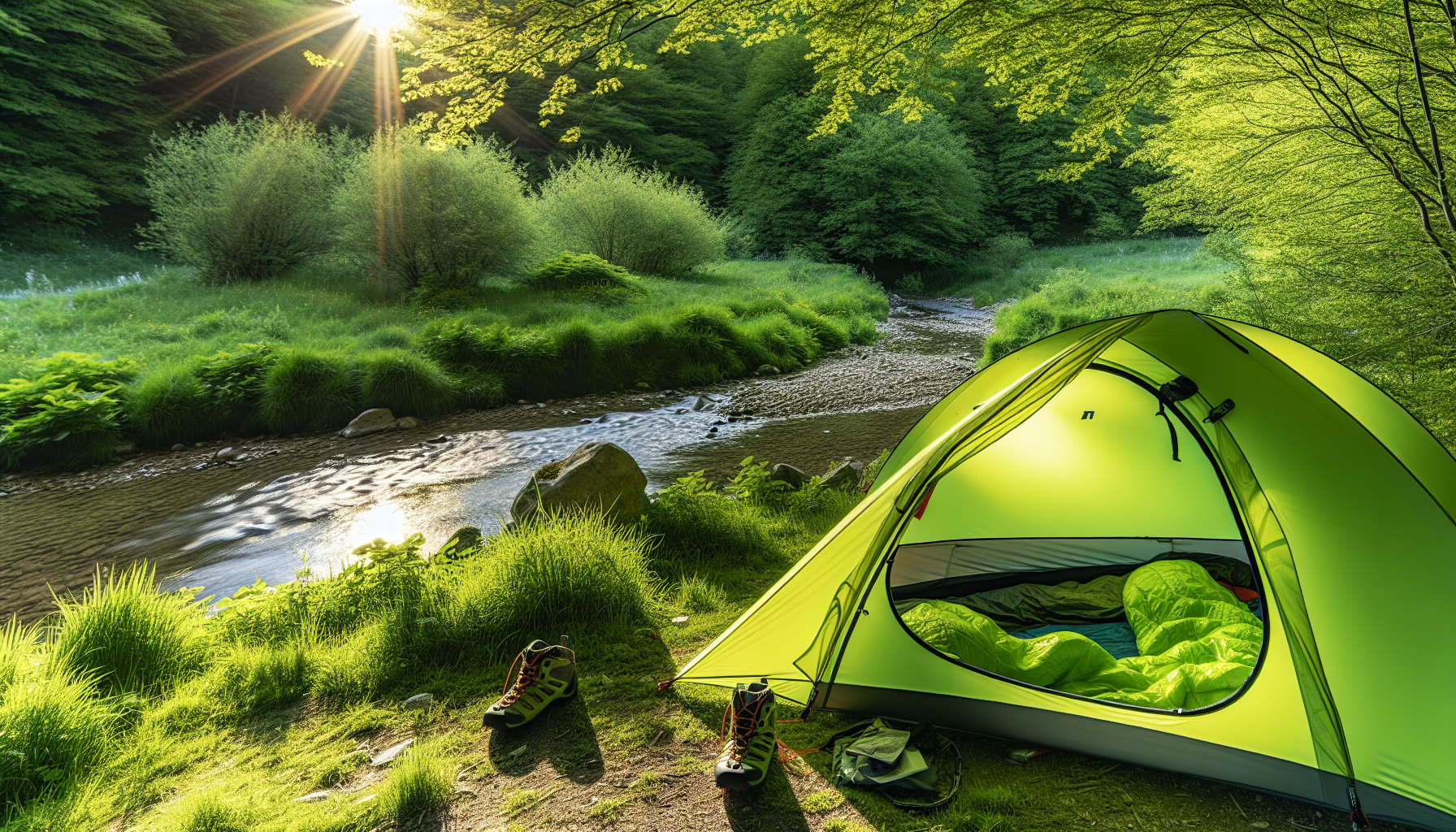
Selecting a tent for ultralight backpacking requires a thoughtful balance between weight and comfort. A lighter tent means easier hiking and more options for where to set up camp, which is a boon when you have a dog tagging along. Solo tents for backpacking can weigh anywhere from 10.7 ounces to 4.5 pounds. A lighter tent can provide more space for your dog and make it easier for you to carry.
However, a larger tent provides more space for your dog to chill and stretch. The extra weight depends on the specific tent, so you need to check the product info for the weight and size capacity that works for your dog. It’s about finding the right balance - ensuring the tent is not too heavy to carry, but spacious enough for your dog to be comfortable.
Maximizing Tent Longevity with a Four-Legged Camper
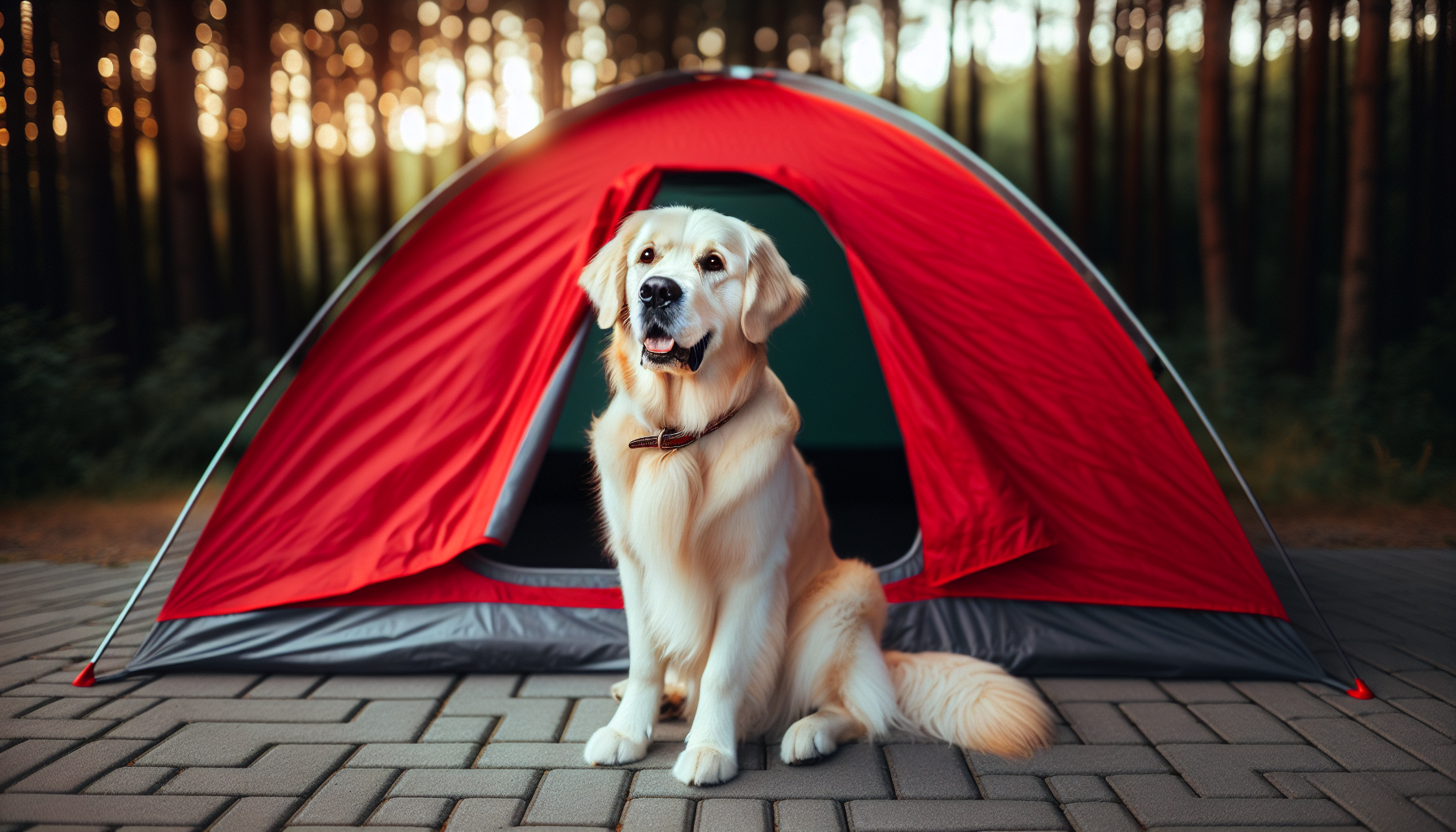
It’s crucial to prolong your tent’s lifespan when camping with your dog. Good tent etiquette can go a long way in ensuring this. Training your dog to behave well inside the tent can prevent potential damage. Rewarding them for good behavior, setting clear rules about food and wildlife, being patient, and sticking to the training can help inculcate good tent manners in your dog.
Cleaning your dog’s paws before entering the tent can also help keep it tidy. Moreover, regular maintenance and cleaning of your tent can extend its lifespan. Washing off paw prints with regular detergent or technical fabric wash, and avoiding the washing machine can ensure that your tent stays in good condition.
Real-Life Tales: Campers Share Their One Person Tent Experiences with Dogs
Insights from experienced campers can be invaluable. Here are some tips for camping with your furry friend:
- Ensure the tent is big enough for both you and your dog, so you can both stay cozy and safe. Campers often recommend opting for a larger space for extra comfort.
- Be mindful of air circulation in the tent to prevent stuffiness.
- Take precautions to prevent potential damage caused by the dog walking on the tent or making holes.
By following these tips, you can have a successful camping trip with your dog.
Campers often recommend durable and spacious tents like the Coleman Evanston Screened Tent, Wenzel 8-Person Klondike Tent, and Coleman Elite WeatherMaster 6 Screened Tent, as they can withstand extra wear from dogs. These real-life experiences can guide you in making the best choice for your camping adventure, especially when considering the best backpacking tents, rooftop tents, and pop up tents.
Tents That Pass the Pup Test: Top Picks for Dog-Friendly Solo Tents
Given the information discussed, let’s examine some of the best dog-friendly solo tents. The Big Agnes Copper Spur HV UL2 and the Zpacks Duplex are excellent options, offering dog-friendly features and ample space for your pup to stretch out comfortably. The Big Agnes Copper Spur HV UL2, for instance, has awning-style vestibules with double-zippers, dual doors and vestibules, and an extended vestibule with two awning-type doors, making it convenient for dogs.
The Nemo Dagger 2P is another great pick. With a floor area of 90 x 50 inches, it provides ample space for your dog. However, its interior is a bit narrow, and the ultralight material can be prone to damages.
The Zpacks Duplex is lightweight, spacious, and offers more than enough room to comfortably accommodate a solo camper and their furry friend.
Summary
Embarking on a camping adventure with your dog can be an exciting experience. From choosing the right size and type of tent to understanding the balance between weight and comfort, each decision contributes to creating a memorable camping adventure. With smart packing, regular maintenance, and a bit of training, you and your four-legged friend can enjoy many cozy nights under the stars. So, gear up and get ready to hit the trail with your best friend!
Frequently Asked Questions
Is it safe to sleep in a tent with a dog?
It's generally safe for dogs to sleep in tents, as they can adapt well to new sleeping environments. The important thing is to provide your dog with shelter, proximity, and security inside the tent, or with a pop-up travel dog tent for their own space.
What size tent for 2 people and a dog?
You should go for a two-person tent that offers ample room for 2 people and a medium-sized dog. It has dimensions of 82''L x 55''W x 55''H for people and 55''L x 23.6''W x 38''H for the pet.
What size tent for one person?
A one-person tent with a floor area of 15 to 20 square feet and 35” to 40” width is ideal for a single camper or hiker, with the gear stored in the vestibule for more room. A good rule of thumb is 20 square feet for each person when determining tent size.
How do you sleep with a dog while camping?
You can snuggle up with your dog in a sleeping bag or let them sleep by your feet in the tent while camping. It's a cozy way to share your sleeping space and stay warm.
How much room does a dog need in a tent?
Your dog will need enough room in the tent to stretch, sit, or lay down comfortably. To calculate the exact space, measure your dog from nose to tail, add 6 inches, and divide by 144 to get the required floor space.
Thank you for reading this article and happy camping!
Your Friend,
Karie1a
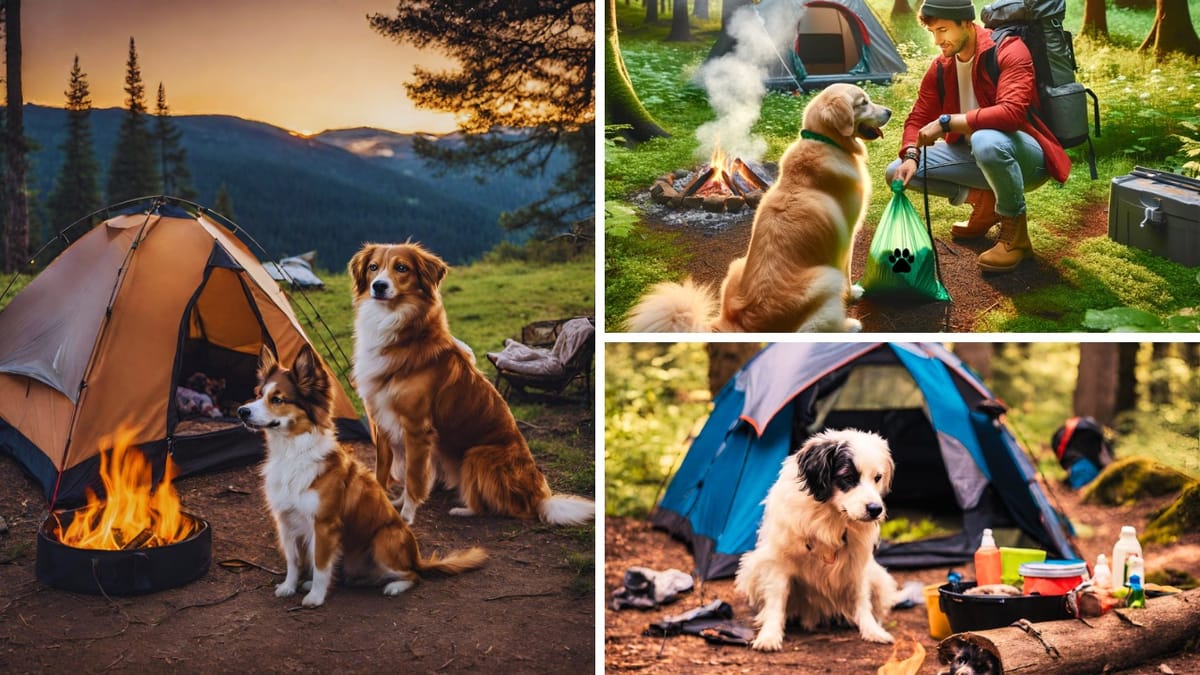
Do dogs sleep in the tent when camping?









